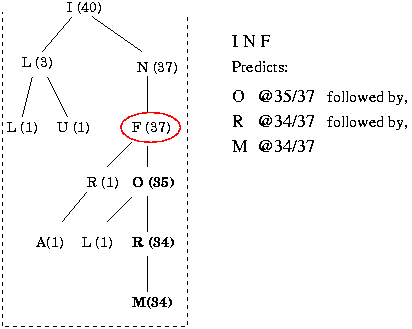 |

Our initial test with Last Successor and PCM prefetching on the Andrew benchmark test showed that the predictions were occurring too close to the time that the data was actually needed. Specifically the prefetch lead time--the time between the start of a data prefetch and the actual workload request for that data--was much smaller than the time needed to read the data from disk. In fact, last successor based prefetching running the Andrew benchmark made correct predictions an average of 1.23 milliseconds before the data was needed. On the other hand, file data reads took on the order of 10 milliseconds. This lead time of 1.23 milliseconds severely limited the potential gains from the last successor based prefetching.
To address the need for more advance notice of what to prefetch, we modified PCM to create a technique called Extended Partition Context Modeling. This technique extends the model's maximum order to approximately 75% to 85% of the partition size and restricts how the partition grows by only allowing one new node for each instance of a specific pattern, similar to how Lempel-Ziv [26] encoding builds contexts. In this technique, the patterns modeled grow in length by one node each time they occur. When we predict from an EPCM model, just as with PCM, we use a given context's children to predict the next event. In addition, if the predicted node has a child that has a high likelihood of access, we can also predict that file. This process can continue until the descendant's likelihood of access goes below the prefetch threshold. For our context models we set a prefetch threshold as the minimum likelihood that a file must have in order to be prefetched. As long as this threshold is greater than 0.5 then each level can predict at most one file, and EPCM will predict the sequence of accesses that is about to occur.
Figure 4 shows an example extended partition. In this example, the circled node is a third order context that represents the sequence INF. From this partition, as with PCM, we see that the sequence INF has occurred 37 times, and it has been followed by an access to the file O 35 times. However, we can also see that 34 of those times O was followed by R and then M. So, this model will predict that the sequence INF will be followed by the sequence ORM with a likelihood of 34/37. If we then see the sequence ORM each node will have their counts incremented and the event seen following M will be added as a child of M.